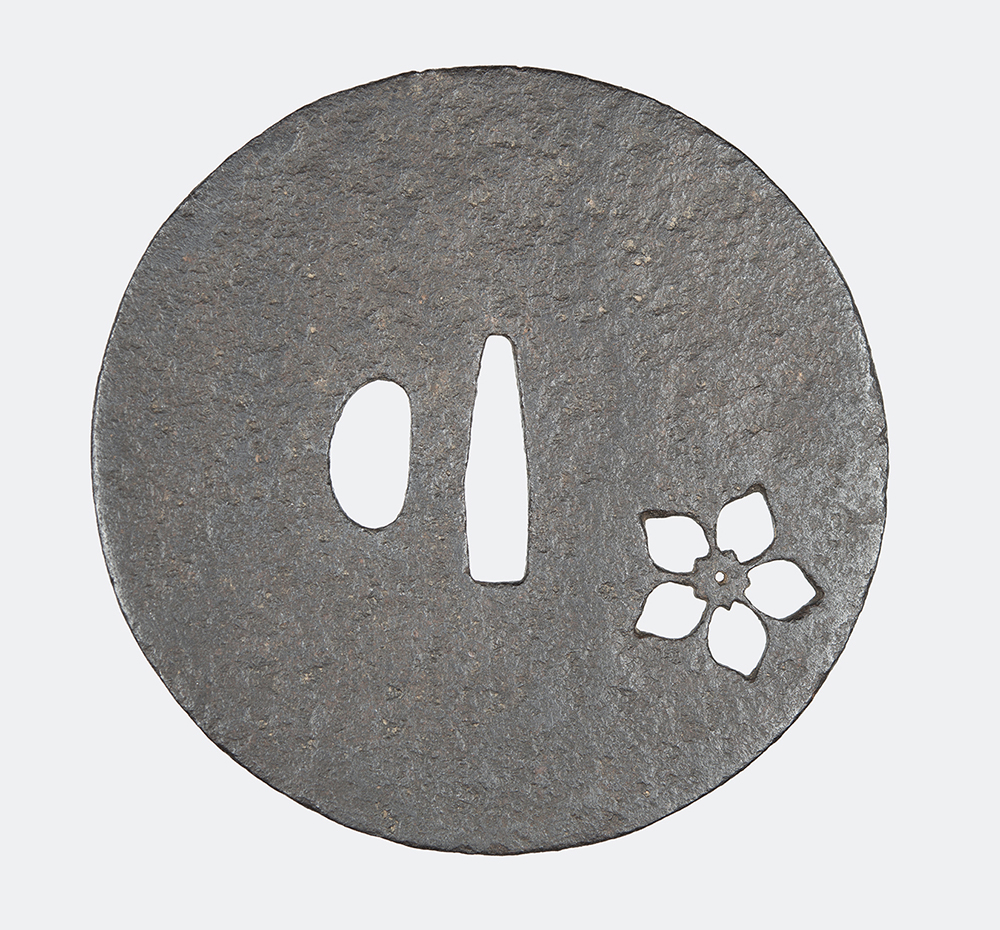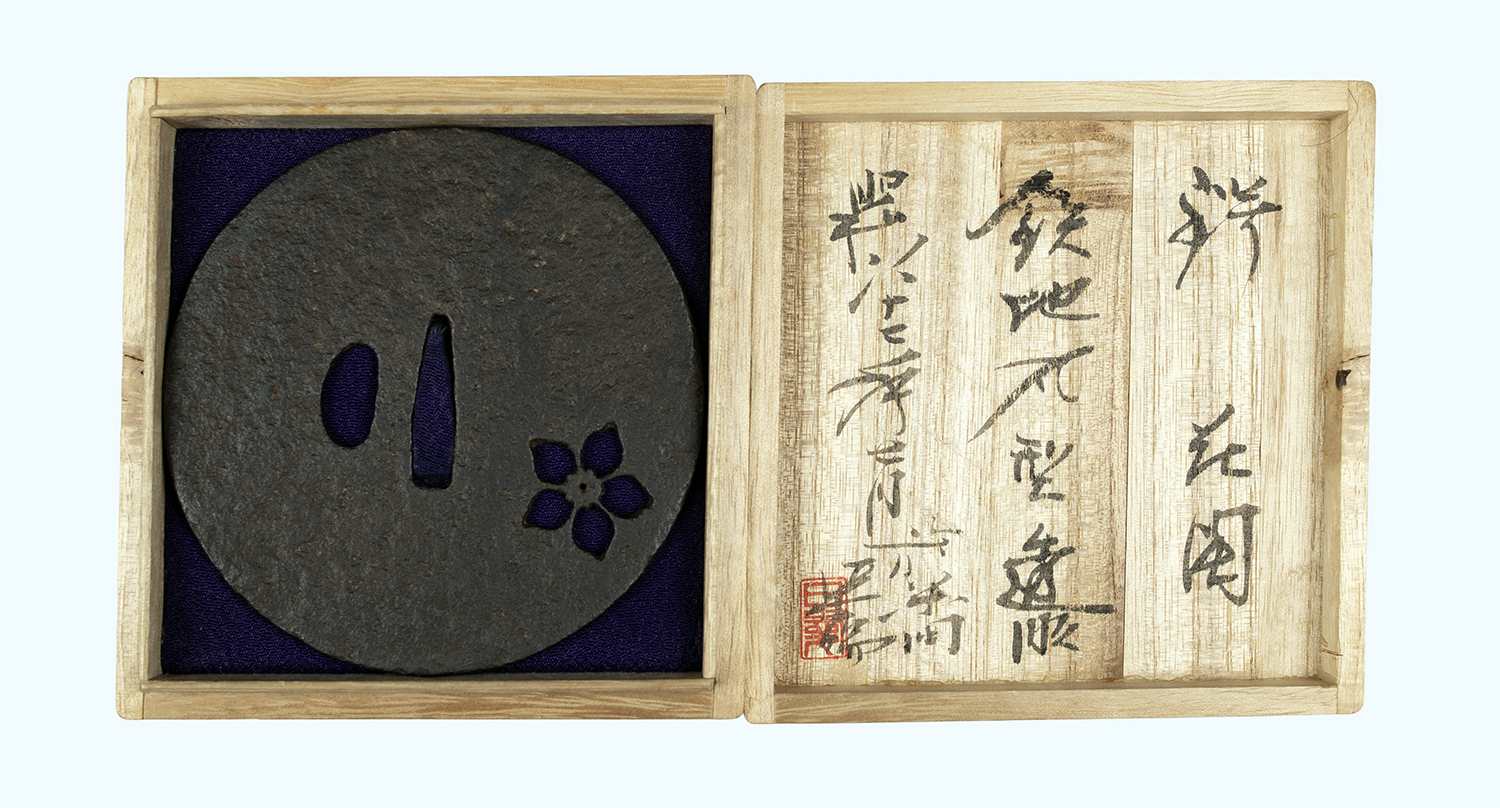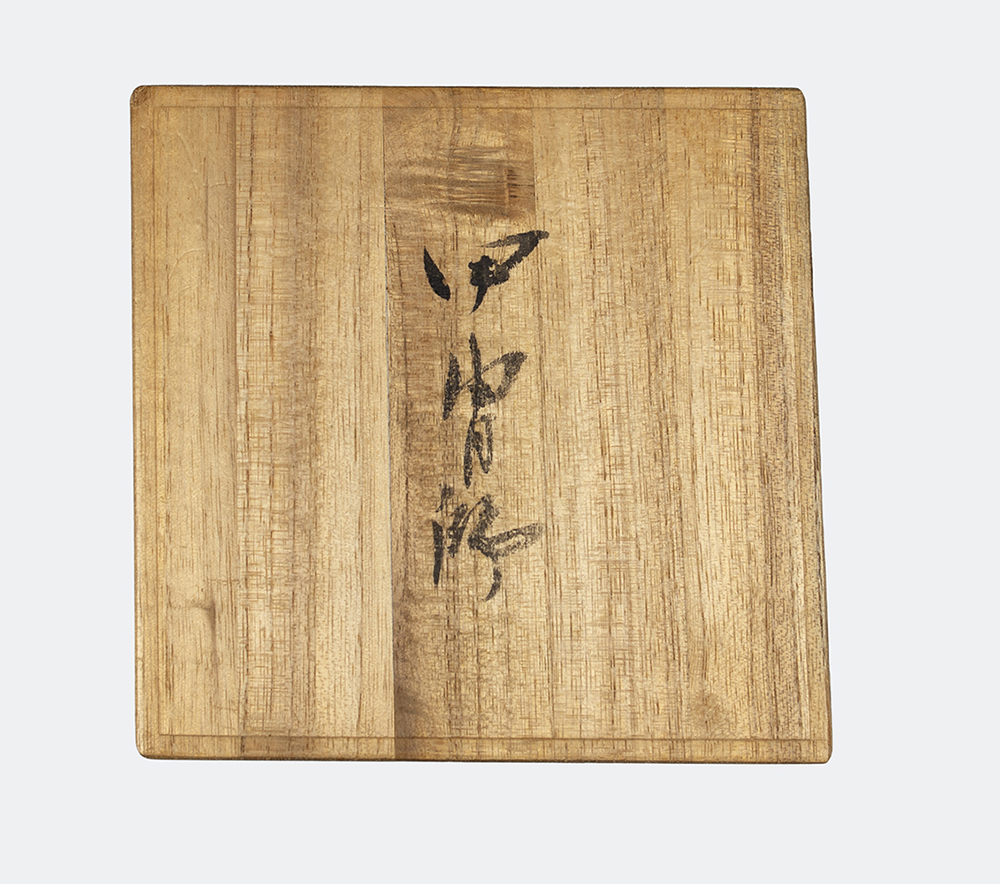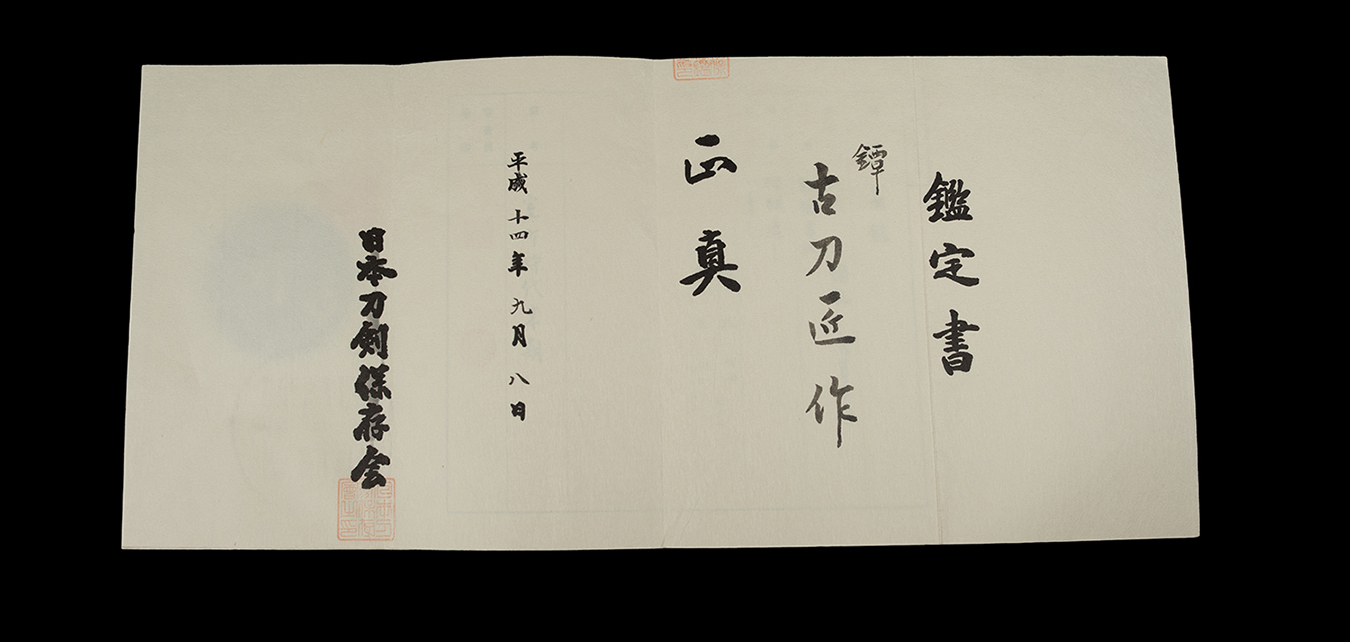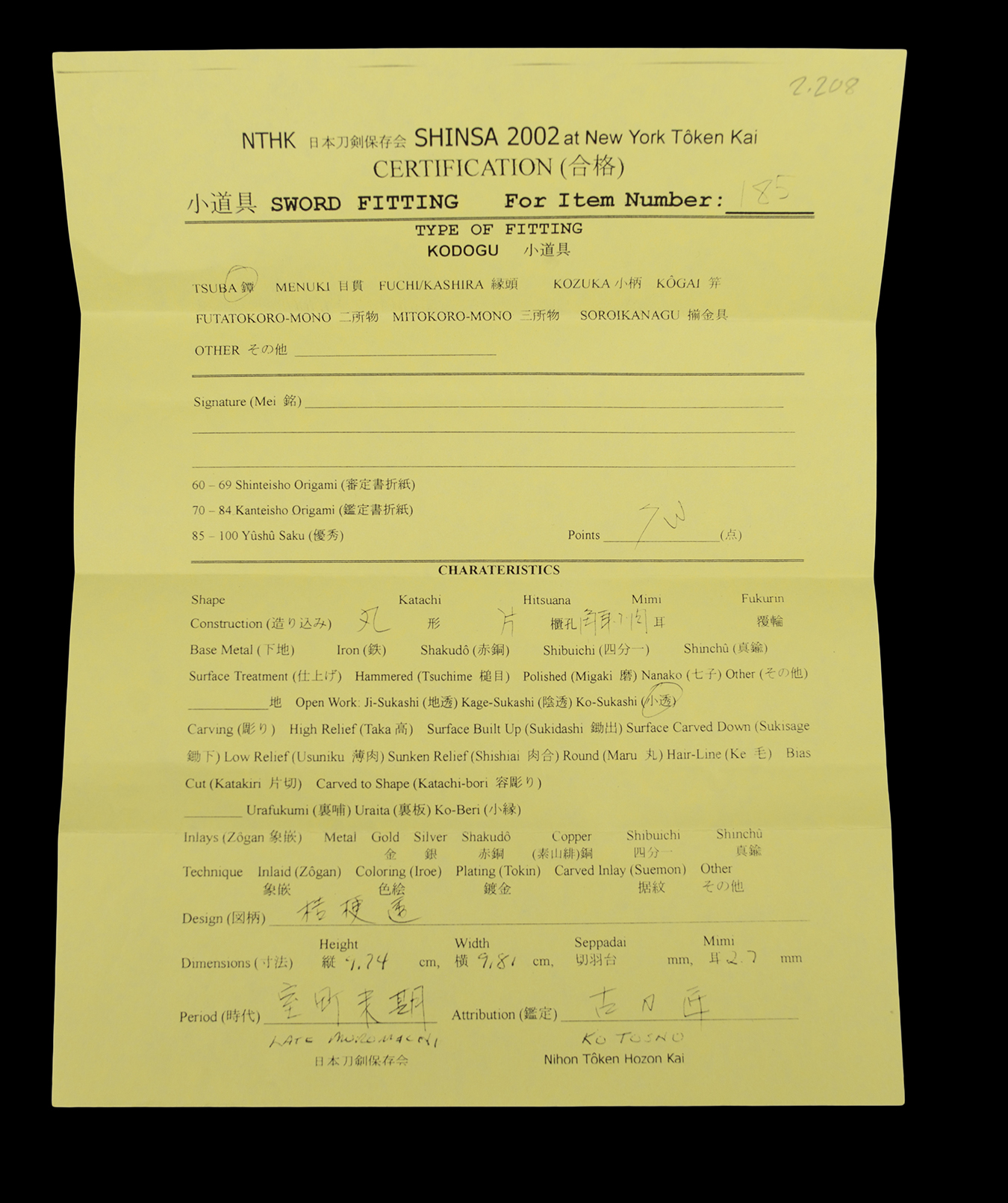古刀匠 鍔
Ko Tosho Tsuba
Ex Prof. Arnold Frenzel Collection
NTHK Kanteisho
Tsuba
Unsigned, Ko-tosho
Ko-sukashi of a kikyo (Chinese bellflower) blossom motif Tetsu-ji
Circa; Mid to late Muromachi period (1429-1595)
Dimensions; 97.5 mm (h), 98.3 mm (w),
3.1 mm (mimi), 3.0 mm (seppa-dai)
This wonderful old tsuba was once owned by Prof. Arnold Frenzel and he wrote a description of it when it was published in the 13th Kokusai Tosogu Kai catalog. The following is that description:
Ko-tosho tsuba are believed to either be to complement a sword just made or as made by the same craftsmen as sideline work. They are said to be made of the same oroshi-gane material as that used to make the blade. Collectors tend to associate smooth surfaces with ko-tosho, but examples with obvious and purposeful hammer work abound. Smoothed surface examples might be the result of repair of corrosion to the surface over time, and again hammered surfaces might be a means of making a corroded surface look less objectionable. This particular tsuba displays a feature I have never seen discussed in the literature, and that is the hammering tends to stop in an irregular way as the edge is approached, thus leaving a narrow and irregular shaped boundary just short of the edge here and there. The result sometimes yields the impression of a very slightly pushed up edge, though that is only incidental to the hammering. A casual examination of ko-tosho in the two Sasano books devoted to sukashi tsuba will reveal about a dozen examples,
and similar illustrations are found in other references as well. I find that sometime feature to be inexplicable and an invitation to further research.
The entire discussion of ko-tosho and their counterpart ko katchushi tsuba is very convoluted and often contrary one author to another. Hammered surfaces are seen on both, and both groups have examples that have only small ko- sukashi devices. The only differentiating criteria that seems to be agreed upon is that ko-katchushi tend to be somewhat later and thicker, aside from the thickness of any raised rim, and the negative space sukashi areas tend to be a larger, sometimes substantially larger, as a proportion of the tsubas area. The most recent view seem is that it is unproven that the two types were made by different craftsmen possessing
different skill sets.
Finally, this tsuba has its own peculiar history. It is shown in Tsubas in Southern California (1968), a publication that only identifies the individual owners of the many pieces
illustrated there and not which group the individual tsuba might be assigned to. That early date, when such pieces were often sold strung together in bundles and for very modest amounts, probably safely removes it from the vexing flood of deceptive reproductions that plague the market these days. Secondly it has a hakogaki written for it by the late Shibata sensei, a respected Japanese dealer, when he visited the US in 1972. He called it a ko-katchushi! One can only assume that he was influenced by the hammer work which tends to be more prevalent in katchushi examples. Finally it was given a kanteisho designation to ko-tosho by Hagihara sensei when he was judging for the NTHK at a US shinsa in 2002. One wonders what he saw, and perhaps he focused with on the single ko-sukashi element, the point being that designations of ko-tosho or ko-katchushi can sometimes be a
toss-up.
Hakogaki lid:
甲冑師 Katchshi
Hakogaki inside of lid:
鐔 花図 tsuba, hana-zu tsuba, flower motif
鉄地丸型透彫 tetsu-ji, marugata, sukashibori iron, marugata, sukashibori
昭和四十七年二月六日柴田光男
Showa yonji nananen nigatsu muika Shibata Mitsuo
February 6th 1972, Shibata Mitsuo
Accompanied by the 73 point NTHK paper (Ko-Tosho, late Muromachi period) and Shibata’s hakogaki. A fine and large unaltered example of an early iron guard in excellent condition.
$2000
nihontocraft@bellsouth.net
